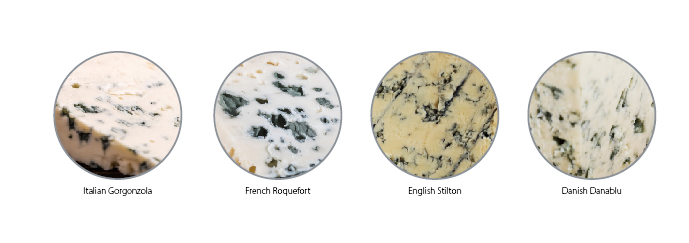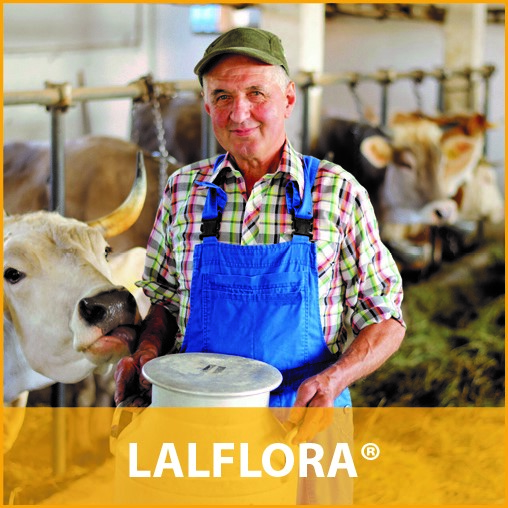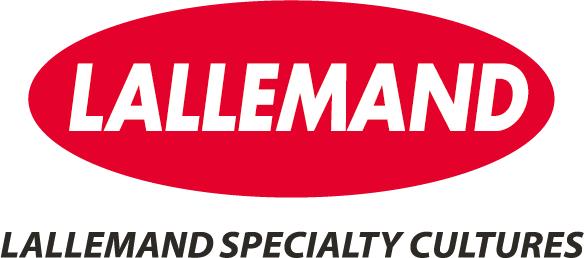
Lallemand Specialty Cultures
Specialty cultures for hybrid dairy and plant-based cheese & meat
Lallemand Specialty Cultures (LSC) strives to bring solutions to cheesemakers by offering a large range of products, from single-strain cultures to ready-to-use culture blends, delivering multiple functionalities. Their portfolio comprises market-proven strains carefully selected from their extensive cell bank, ensuring the full coverage of the ecological succession involved in cheesemaking.
From starter to surface and ripening, Lallemand has over 100 years of experience in dairy culture fermentation. In 1933, the Rosell Institute, a Canadian subsidiary, pioneered the development of the first freeze-dried yogurt culture in North America.
LSC provides a full range of dairy, meat, and plant-based solutions, each with a unique appearance, color, flavor, and texture that gives it competitive advantages.
Cheese flavor blends
Lallemand Specialty Cultures (LSC) strives to bring solutions to cheesemakers by offering a large range of products, from single-strain cultures to ready-to-use culture blends. Flavor blends are key to developing the cheese, rind, and aroma. Highly popular, they are easy to use, ensure consistent cheesemaking, and may reduce costs.
Applications | Product | Key Features |
|---|---|---|
| Washed-Rind Soft and Semi-Hard Cheeses | FAA1 |
|
| Bloomy and Washed-Rind Soft Cheeses | FAA4 |
|
| Washed-Rind Soft and Semi-Hard Cheeses | FAPM |
|
| FAAY |
| |
| Bloomy and Washed-Rind Soft Cheeses and Goat Cheeses | FETRX1 |
|
| Bloomy and Washed-Rind Soft Cheeses | LMC |
|
Product | Staphylococcus xylosus | Yeasts | Geotrichum candidum | Glutamicibacter Arilaitensis | Brevibacterium Spp | ||
DH | KL | Aurentiacum | Linens | ||||
FAA1 | x | x | x |
| x |
| x |
FAA4 | x | x |
| x | x |
| x |
FAPM | x | x |
| x | x |
| x |
FAAY | x | x | x |
|
| x |
|
FETRX1 |
| x | x | x | x | x |
|
LMC | x | x |
|
|
| x |
|
| Applications | Product | Key Features |
|---|---|---|
| Washed-Rind Soft and Semi-Hard Cheeses | FAA1 |
|
| Bloomy and Washed-Rind Soft Cheeses | FAA4 |
|
| Washed-Rind Soft and Semi-Hard Cheeses | FAPM |
|
| FAAY |
| |
| Bloomy and Washed-Rind Soft Cheeses and Goat Cheeses | FETRX1 |
|
| Bloomy and Washed-Rind Soft Cheeses | LMC |
|
| Product Name | Staphylococcus Xylosus | Yeasts | Geotrichum Candidum | Glutamicibacter Arilaitensis | Brevibacterium Spp | ||
|---|---|---|---|---|---|---|---|
| DH | KL | Aurentiacum | Linens | ||||
| FAA1 | x | x | x | x | x | ||
| FAA4 | x | x | x | x | x | ||
| FAPM | x | x | x | x | x | ||
| FAAY | x | x | x | x | |||
| FETRX1 | x | x | x | x | x | ||
| LMC | x | x | x | ||||
Blue Cheese cultures
To answer the rising interest in blue cheese worldwide and continue reinforcing their position in the surface and ripening business, Lallemand Specialty Cultures offers a line for blue cheese applications.
Each blue cheese type originates from a specific milk and manufacturing process and exhibits distinctive characteristics. The various lipolytic and proteolytic activities of Penicillium Roqueforti strongly contribute to the diversity of blue cheeses.
LSC offer three FLAV-ANTAGE® Penicillium Roqueforti in liquid form and a Leuconostoc Mesenteroides , the FLAV-ANTAGE® LN1029 which is a heterofermentative gas producing culture that perfectly opens the curd of soft blue cheese to allow for the blue mold growth.
| Product Name | Color | Applications | Growth Speed | Salt Tolerance | Proteolysis | Lipolysis |
|---|---|---|---|---|---|---|
| FLAVANTAGE® PR5 | Dark Blue Green | Gorgonzola (Mild) | 3 | 4 | 3 | 1 |
| FLAVANTAGE® PR14 | Dark Blue | Gorgonzola (Natural) | 4 | 4 | 3 | 2 |
| FLAVANTAGE® PR16 | Bright Dark Blue | Stilton, Danablu | 4 | 3 | 4 | 3 |
| 1 = Low, 2 = Low-Medium, 3 = Medium-High, 4 = High | ||||||

LALFLORA® Range
LALFLORA® starts from raw milks carefully selected by Lallemand Specialty Cultures (LSC) and collected as close as possible to milking.
The strains from those raw milk microflora are isolated on specific culture media and identified by genetic techniques. For food safety reasons, only the species belonging to the inventory of the International Dairy Federation (Inventory of microbial food cultures with safety demonstration in fermented food products, Bulletin of the IDF N° 495/2018) are retained.
The criteria applied during the selection step make it possible to collect only the most aromatic and technologically relevant strains.
LSC's development experts then combine and produce in co-culture the selected strains using specific methods relying on decades of fermentation expertise.

Benefits and Advantages
- Product with strong Terroir, or geographic, identity taking advantage of the trend for regional authenticity.
- Return to nature through the use of indigenous microflora.
- Improvement of the cheese organoleptic qualities.
- Differentiation of the product to stand out from its competition.
- Limit the possibility of cheese imitation.
- Higher economic value of a product with a traditional image.

LALFLORA® RM1
Composed of several strains of different species. The total population of the concentrated frozen culture is superior to 1.10 11 cfu/g and includes the following genus and species:
• Lactococcus lactis
• Lactococcus raffinolactis
• Lactobacillus rhamnosus
• Lactobacillus paracasei
• Macrococcus caseolyticus
LALFLORA® RM1 culture should be used as an aromatic and ripening culture in soft cheese and uncooked, pressed cheese technologies. It should be used in addition to the acidifying culture by direct inoculation of the milk. It allows the development of complex flavors typical of raw milk, with cheese, fruity, brothy, and cowshed flavors. Depending on the technology temperature and on the dosage, LALFLORA® RM1 may interact with the acidifying activity of the starter.
LALFLORA® AU1: An Aromatic and Ripening Culture for Semi-hard & hard cheeses
A combination of several strains from different species. The total population of the frozen culture is superior to 1.10 11 cfu/g and includes the following genus and species:
• Lactobacillus paracasei
• Lactobacillus plantarum
• Lactococcus lactis
• Lactobacillus spp. (Thermophile)
• Leuconostoc lactis
• Bifidobacterium spp.
LALFLORA® AU1 culture should be used in addition to the acidifying culture by direct inoculation of the milk. It has demonstrated to be an efficient solution for cheesy/fruity aromatic expression and accelerated ripening:
• Increased BCAA catabolism with production of 3-methyl and 2-methyl butanoic acid
• Increased secondary proteolysis


